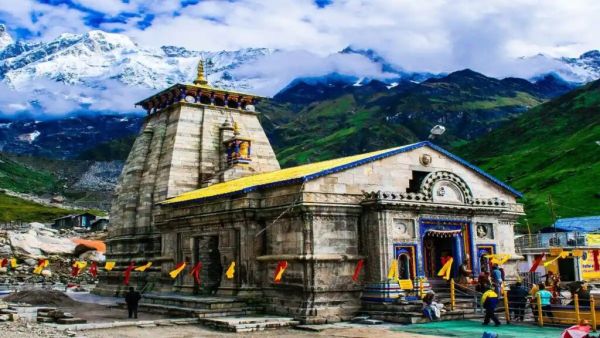
Kedarnath Dham is a sacred site dedicated to Lord Shiva, which has many religious stories to origin. It is also considered a place of worship of the gods. Let’s know how Kedarnath became Shiva’s abode
Kedarnath Temple History: Like every year, this year also the auspicious beginning of Chardham Yatra has started. The batches of the devotees are leaving for four major pilgrimage sites through the high mountain routes of Uttarakhand. One of these four dhams is a major pilgrimage to Kedarnath, which is dedicated to Lord Shiva. Let us know about Kedarnath in detail how Kedarnath became Shiva’s abode and what characteristics are there?
Once Narada Muni went to Lord Vishnu. Narada Muni was a knowledgeable and guide to religion. He said to Lord Vishnu, “Lord! You always rest on Sheshnag in Kshir Sagar and Goddess Lakshmi is in your service. This lifestyle does not become an inspiration for the animals of the earth. People of the world can move forward only through hard work and penance.”
Narada Muni touched the mind of Lord Vishnu. He thought that he should also adopt a life that people can learn something. Therefore, he decided to do penance for the welfare of the world and walked towards the Himalayas in search of Tapasthali.
While walking, Lord Vishnu found a holy and quiet place called Badrinath in the Himalayan region. This place was the abode of Lord Shiva and Mother Parvati at that time. Lord Vishnu understood that it would not be appropriate to go straight there, because it is someone else’s abode. So he thought of a device – he took the form of an innocent child and sat there and sat outside the house.
When Mata Parvati saw that child, her inner love gathered. She brought her to her house and took her in her lap. Shivji immediately realized that this is not an ordinary child, he is Vishnu himself who has come for some purpose. He said this to Mata Parvati, but the mother was in her Vatsalya sense and did not agree.
Then Shiva and Mata Parvati went to the forest for some time. When he returned, he saw that his house was closed from inside – that is, Vishnu had entered it. Parvati ji was surprised to see this, but Shiva was calm. They all understood that this is the leela of Lord Vishnu. Then Mata Parvati asked Shiva – “What to do now?” Shiva explained to them that now this place should be abandoned.
In this way Shiva-Parvati left Badrinath for Lord Vishnu and he went ahead towards the Himalayas. On the go, they reached a height, which was covered with mountains and snow from all around. This place was extremely calm and pure. He created his new residence there and the same place was called “Kedarnath”. In this way Kedarnath Dham became the main residence of Lord Shiva and even today this place is a symbol of his glory and penance.
Located in Rudraprayag district of Uttarakhand, this ancient temple is one of the 12 Jyotirlingas and is also a major center of Panch Kedar. It is believed that King Janamejaya, grandson of the Pandavas, built this temple. Later Adi Shankaracharya rebuilt and renovated it.
The sanctum sanctorum – where Swayambhu Jyotirlinga is located.
Middle Part – There is a Sri Yantra of Maa Parvati and the shape of Ganesh ji near Shivalinga.
The gathering pavilion – where devotees gather.
A wonderful thing here is that a natural yajnopavit appears on the Shivling, and the rosary of rhinestones also appears to be themselves. There are four huge pillars inside the temple, which are considered to be a symbol of the four Vedas. It is a special belief that it is very virtuous to revolve from behind these columns.
Another amazing feature of the Kedarnath temple is, its supernatural form still when it remains closed for humans for six months. Due to heavy snowfall, when the doors of the temple are closed during the winter, it is said that the lamp itself keeps burning in the sanctum sanctorum of the temple.
Some local residents even say that despite the closure of the temple in winter, the sound of bells is heard from inside. According to religious texts, when the temple is closed for humans, the gods themselves worship there in those six months. That is why Kedarnath is considered not just a pilgrimage center, but also the worship site of the gods.